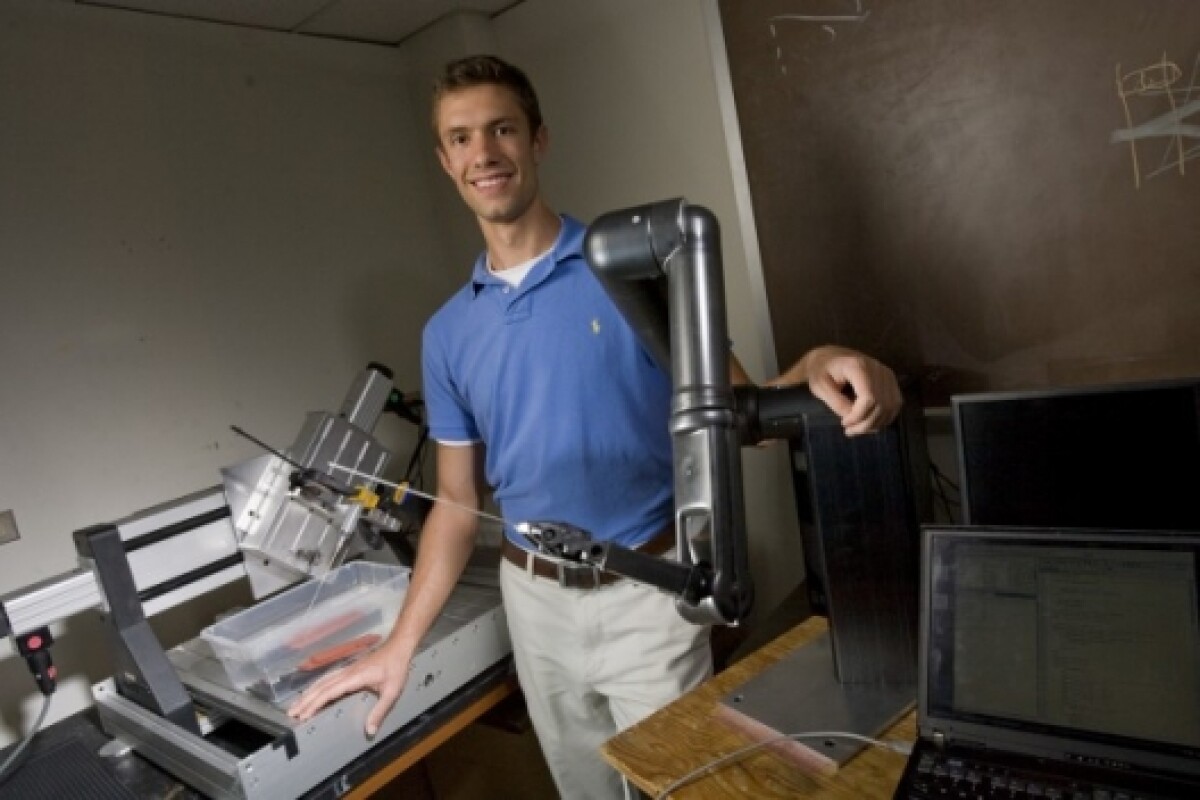Bioengineers at Duke Univesity, North Carolina, have developed a laboratory prototype of a robot that can locate and surgically extract shrapnel pieces from flesh without any kind of human supervision. Using 3-D ultrasound imaging as “eyes”, the tabletop robot was able to precisely locate tiny shards of metal and then successfully guide a needle to their exact location.
“It can be very difficult using conventional means to detect small pieces of shrapnel, especially in the field,” said Director of the Duke University research team, Stephen Smith.
While the tabletop robot itself was fairly rudimentary, the combination of an electromagnet attached to the 3D probe and an artificial intelligence program that processed data in real time allowed the robotic arm to move with surgical precision. By replacing the needle probe with a tiny tool, such as a grabber, the robot would be able to locate and remove any kind of small, metallic object.
Smith suggested the system might also prove useful in placing and removing the radioactive “seeds” used in treating prostate cancer or for removing foreign, metallic objects from the eye.






